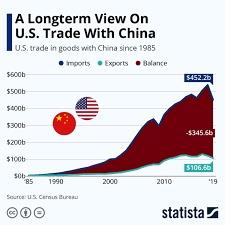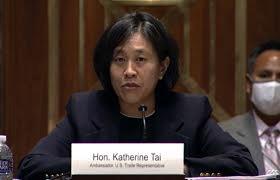 China is an essential contributor to volume and hence profitability of segments of the U.S. poultry industry. During the first eight months of 2021, China received 290,753 metric tons of chicken products including feet valued at $535.5 million with a unit price of $1,852 per metric ton. China increased volume by 4.7 percent compared to 2020 but value rose a disproportionate 30.8 percent from the previous year. As the second-ranked importer of chicken products, China is therefore important to both volume and value. China does not import either eggs or egg products since as the world’s largest producer of chicken and duck eggs the nation is more than self-sufficient. Over the first eight months of 2021, Hong Kong designated an “Autonomous Region” of China was the second largest importer of shell eggs from the U.S. receiving 36.3 million dozen representing 26.6 percent of exports valued at $31.4 million with a unit value of 87 cents per dozen Imports of shell eggs by Hong Kong increased by 13 percent in volume and 29 percent in value compared to the corresponding eight months of 2020.
China is an essential contributor to volume and hence profitability of segments of the U.S. poultry industry. During the first eight months of 2021, China received 290,753 metric tons of chicken products including feet valued at $535.5 million with a unit price of $1,852 per metric ton. China increased volume by 4.7 percent compared to 2020 but value rose a disproportionate 30.8 percent from the previous year. As the second-ranked importer of chicken products, China is therefore important to both volume and value. China does not import either eggs or egg products since as the world’s largest producer of chicken and duck eggs the nation is more than self-sufficient. Over the first eight months of 2021, Hong Kong designated an “Autonomous Region” of China was the second largest importer of shell eggs from the U.S. receiving 36.3 million dozen representing 26.6 percent of exports valued at $31.4 million with a unit value of 87 cents per dozen Imports of shell eggs by Hong Kong increased by 13 percent in volume and 29 percent in value compared to the corresponding eight months of 2020.
There has been a sharp deterioration in relations between China and the U.S. extending through the past Administration and continuing into the first eight months of the current Administration. The issues of Taiwan, lack of action on the Phase-1 Trade agreement and aggression in the South China Sea are obviously areas of contention. In March, Secretary of State Anthony Blinken met with State Counselor Wang Yi in Anchorage Alaska. Both sides aired their differences and traded less than diplomatic restatements of their respective positions. China characterized the U.S. approach to the meeting as ‘condescending’ and ‘grandstanding’.
Some restoration of mutual understanding was established on Wednesday October 6th in an extended discussion between National Security Advisor Jake Sullivan and Senior Diplomat Yang Jiechi in Switzerland. Topics reviewed at this meeting included trade, territorial expansion in the South China Sea, intimidation of Taiwan and human rights in Xinjiang Province. Apparently the discussion was productive in that China was apparently willing to consider items of mutual concern including climate change and the discussions deviated from traditional talking points.
One outcome of the meeting was an agreement for President Biden to meet with President Xi Jinping in a virtual format this quarter. The spokesperson for the Department of State stated, “We have an agreement in principle to hold a meeting and we think it’s important for the leaders to take more of a role in managing this relationship through ongoing discussions directly between the two of them.” During September, the President spoke with Xi mainly to establish lines of communication and to facilitate the subsequent discussions in Switzerland.
 Perhaps the Administration’s position on interaction with China is best exemplified by recent comments made by Trade Representative Ambassador Katherine Tai. Addressing a meeting organized by The Center for Strategic International Studies, Ms. Tai stressed the need for the U.S. to become more competitive through R&D, advances in energy technology and promoting U.S. production capability. Ms. Tai was determined that China should comply with commitments made in the Phase-1 Trade Agreement of February 15th 2020. Her address provided an opportunity for the Administration to confirm that tariffs placed on goods imported from China by the previous Administration would remain at least for the short-term to serve as leverage in negotiations. Ambassador Tai is promoting what she refers to as “smarter and more resilient trade”. China is less a trading partner than an adversary, given imposition of restraints on commerce and recalcitrance to modify coercive tactics and their indifference to U.S. and international concerns.
Perhaps the Administration’s position on interaction with China is best exemplified by recent comments made by Trade Representative Ambassador Katherine Tai. Addressing a meeting organized by The Center for Strategic International Studies, Ms. Tai stressed the need for the U.S. to become more competitive through R&D, advances in energy technology and promoting U.S. production capability. Ms. Tai was determined that China should comply with commitments made in the Phase-1 Trade Agreement of February 15th 2020. Her address provided an opportunity for the Administration to confirm that tariffs placed on goods imported from China by the previous Administration would remain at least for the short-term to serve as leverage in negotiations. Ambassador Tai is promoting what she refers to as “smarter and more resilient trade”. China is less a trading partner than an adversary, given imposition of restraints on commerce and recalcitrance to modify coercive tactics and their indifference to U.S. and international concerns.
The meeting in Switzerland confirmed that the Phase-1 Trade Agreement benefited the U.S. agricultural sector. The Administration is determined that China should fulfill promises and prevent China imposing any barriers to agricultural exports that would be contrary to the rules of the World Trade Organization. It is evident that China must comply with conditions agreed to in the Phase-1 Agreement before proceeding with any extension to the existing pact.
The fact that U.S. and China are once again engaging in diplomacy is a welcome sign and should defuse tensions. It is questionable whether the two nations can ever participate in harmonious trade. Currently China needs to import soybeans, corn, sorghum, and energy. We in turn are dependent on a supply of manufactured goods and some critical raw materials. China has as far as possible sourced commodities from competitors in Latin America on the basis of more favorable currency and cheaper FOB prices from suppliers operating with freedom from environmental, labor, safety and related restraints. This now a time for reevaluation of the bilateral relationship with pressure to reverse injustices imposed by China. Good places to start will be rebuilding our infrastructure and improving our domestic manufacturing capacity.